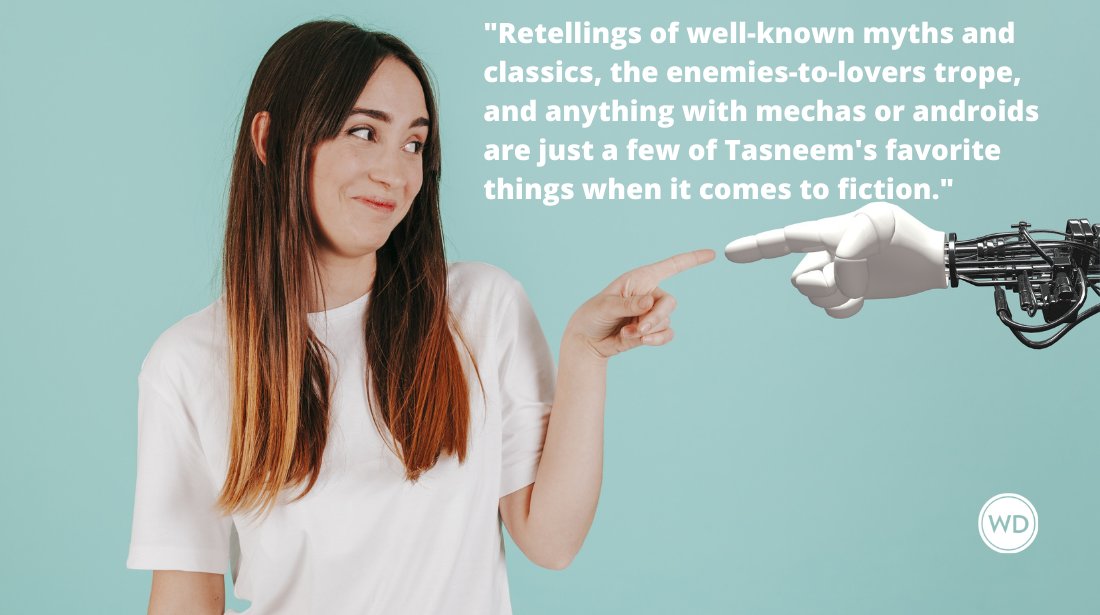Why Write a Collaborative Novel? Why Not?
Christopher Robinson and Gavin Kovite, authors of 2015 novel WAR OF THE ENCYCLOPAEDISTS, discuss why they love collaborative writing and co-writing a novel.
When we tell people we’ve co-authored a literary novel, the first thing almost everyone says is: “And you’re still friends? How on earth did you manage that?” It’s as if they imagine collaborative fiction as a kind of three-legged race: goofy and fun at an office picnic, but ill suited to a serious runner.
It’s a strange reaction, given that successful collaborations abound in music and film.
Check out War of the Encyclopaedists by Christopher Robinson and Gavin Kovite today.
Is writing fiction really all that different? We gave early drafts of our manuscript to friends. We asked our significant others to scrutinize our female protagonists, and the novel further improved in the deft hands of our editor. So one answer to the question of how one writes a collaborative novel is: All writing is collaborative.
The more personal answer is this: We’ve been friends for years and in the normal course of hanging out, we crack jokes, and the jokes become stories; plot arcs and characters arise. At some point, we write down a bunch of notes and Chris, who’s borderline OCD, will organize our plot outline in a hyper-detailed spreadsheet. Then we’ll divvy up scenes and draft them. Gavin, at this point, will write scenes not in the goddamn outline! But this is good, as it forces us to continually rethink the plot as we write. Our personalities meet in the middle with a balance of caprice and control: We play against type when it comes to writing, as the poet is the taskmaster and the military officer is the scatterbrain.
Our collaboration began 10 years ago, in Rome, on a pilgrimage to Keats’ grave as part of an undergraduate study abroad. We had known each other only a few weeks, and were already starting to annoy our classmates with our constant patter and inside jokes. While wandering through the Protestant Cemetery, the names of the dead called out to us: Baltimore Gosshawk Wakefield III, Aeneas MacBean Esq. They were begging to be turned into silly characters in a pulp historical mystery novel! So we wrote one. It took us five years and it eventually ended up in a drawer, but it taught us how to write and how to write together. Over the last five years, we applied those lessons to a more serious project: “War of the Encyclopaedists.”
With this novel, which is based to some extent on our lives, there was an easy dividing line: Gavin would draft most (but not all) of the scenes set in the Baghdad occupation, and Chris would draft most (but not all) of the grad school scenes in Boston. Then we’d edit each other’s work, swap and rewrite, swap and rewrite, each scene affecting the others in what we imagine is the normal evolution of any novel. For key scenes—especially at the beginning and end—we actually sat at a table with one laptop and passed it back and forth, one of us typing and the other dictating. This is perhaps the part that is most unfamiliar to solo writers. It works for us because we have similar tastes and senses of humor and because we’ve developed a common narrative voice through years of collaboration.
But this answer, too, rarely satisfies. We suspect that’s because when people ask, “How do you write a collaborative novel,” there’s an underlying assumption that solo authorship is a greater achievement. The question they’re really asking is: “Why write a collaborative novel?”
Seriously? There are a dozen good reasons. It cuts the workload in half, it forces us to tackle social and political themes with a higher degree of complexity, it even gives us plausible deniability (“No, Mom, I didn’t write that line; it was Chris!”). With two authors, every scene must ring true to two perspectives instead of one, every sentence must please four ears instead of two, and it’s so much easier to kill your darlings: you just close your eyes and let your co-author delete them for you.
Christopher Robinson and Gavin Kovite are the authors of WAR OF THE ENCYLOPAEDISTS (Scribner, May 2015). Robinson is a Boston University and Hunter College MFA graduate, a MacDowell Colony fellow, and a Yale Younger Poets Prize finalist. His writing has appeared in many publications, including The Kenyon Review and McSweeney’s. Kovite was an infantry platoon leader in Baghdad from 2004-2005. He attended NYU Law and is now an Army lawyer. His writing has appeared in literary magazines and in Fire and Forget, an anthology of war fiction. Connect with them on Twitter.







